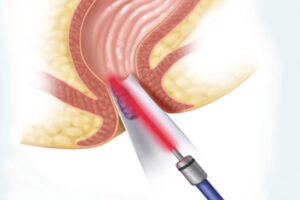What is Vertigo?
Vertigo, the medical name for dizziness; It is the state of feeling that the person or the objects around him are moving even though there is no movement. Vertigo is not a disease, but a finding that many diseases can cause, actually an illusion of movement.
Why Does Vertigo Occur?
Many reasons play a role in the emergence of vertigo. Causes originating from the inner ear; inner ear involvement of upper respiratory tract infection, deterioration of the physiology of the dust in the inner ear, increase in the inner ear fluid called endolymph, middle ear infections affecting the inner ear, inner ear tumors.
Except this;
- Epilepsy
- Meningitis
- Migraine
- brain tumors,
- head injuries
- Psychological diseases can be causes of vertigo.
What Causes Vertigo?
Vertigo occurs due to a disorder in the structures in the inner ear that are responsible for balance or a problem in the central nervous system.
Labyrinthite:
In the inner ear, there is a structure called the labyrinth, which contains the vestibulocochlear nerve, which is responsible for hearing and balance. Labyrinthitis is inflammation in this structure as a result of infection. This inflammation of the inner ear impairs the function of the vestibulocochlear nerve.
As a result of damage to the vestibulocochlear nerve, which has many functions such as head movements, body position, and hearing, disruptions occur in the transmission of messages to the brain. As a result, people with labyrinthitis may show some of the symptoms ranging from vertigo to hearing loss, from headache to tinnitus.
Vestibular Neuritis:
Inflammation of the vestibular nerve is called vestibular neuritis.
Although this disease is similar to labyrinthitis, the person’s hearing is not affected in vestibular neuritis.
In patients with vestibular neuritis; Symptoms such as vertigo, blurred vision, severe nausea, loss of balance, and falling may occur.
Cholesteatoma:
Cholesteatoma is a non-cancerous mole-like structure that usually develops in the middle ear due to recurrent infections. As the cholesteatoma grows behind the eardrum, it can damage the bone structures in the ear and cause hearing problems such as vertigo and hearing loss.
Meniere’s Disease:
Meniere’s disease is a disease that occurs due to the accumulation of fluid in the inner ear and causes vertigo attacks.
People with Meniere’s disease may experience symptoms such as hearing loss and tinnitus in addition to vertigo. This disease is most common in people aged 40-60 years. How Meniere’s disease develops has not yet been fully elucidated. It is thought that the disease may be caused by narrowing of blood vessels or autoimmune. There are findings showing that infection and genetic predisposition may also play a role in the development of the disease.
Benign Paroxysmal Positional Vertigo (BPPV):
The inner ear contains structures that contain fluid and calcium carbonate crystals, known as otolith organs.
In BPPV, calcium carbonate crystals leave where they should be and fall into the semicircular canals. These crystals, falling into the semicircular canal, touch the sensory hair cells in the canal with each movement.
Because of this wrong placement of the crystals, the brain cannot receive accurate information about position and movement from the ear. In this case, it causes dizziness and vertigo. In BPPV, patients usually experience vertigo attacks for less than 1 minute. However, these patients may also experience symptoms such as nausea.
Some other conditions that cause vertigo can be listed as follows:
- Migraine
- Head trauma
- Ear surgery
- Perilymphatic fistula (flow of ear fluid into the middle ear as a result of rupture of the membrane between the inner ear and middle ear)
- Shingles
- Otosclerosis (growth of bones in the inner ear)
- Syphilis
- Ataxia
- Stroke
- Diseases involving the cerebellum or brain stem
- Acoustic neuroma
- Multiple Sclerosis (MS) disease
What are the Types of Vertigo?
Peripheral Vertigo:
Peripheral vertigo occurs in approximately 80% of total vertigo cases. It is usually caused by a problem with the inner ear.
Small organs in the inner ear are responsible for sensing gravity and sending information about a person’s position to the brain. Thanks to this connection, people can maintain their balance while standing. Any problem with this connection results in the formation of vertigo.
Central Vertigo:
Problems with the brain stem or the cerebellum, that is, with the central nervous system, cause central vertigo. The ratio of central vertigo cases is about 20% of the total vertigo cases.
How Is Vertigo Diagnosed?
A detailed medical history is taken from people who apply to the doctor for the diagnosis of vertigo. Thus, possible causes of dizziness in the patient are tried to be determined.
Imaging methods such as examination, blood test, ultrasound or MRI can be used to detect situations that may cause dizziness.
Some of the common neurological examination types in patients presenting with dizziness are as follows:
- Examination of eye movements called nystagmus
- Nodding Test
-
Romberg Test:
The doctor tells him to stand up from the mistake and stand up straight. He then asks the patient to put their feet together and close their eyes. The patient’s unbalance after closing his eyes indicates that there may be a problem with the central nervous system in the patient.
-
Fukuda-Unterberger Test:
In this test, the patient is asked to pretend to walk for 30 seconds with his eyes closed. If the patient is turned to one side when stopped, this may be an indication that the patient has a problem with the inner ear.
-
The VNG test, which has become widespread today:
Evaluation of eye movements and visual muscle movements with the help of a glasses and computer.
- Evaluation of eye movements accompanied by VNG device with caloric tests.
Other Tests That Can Diagnose the Cause of Vertigo
Other tests used to diagnose vertigo may include:
Posturography Posturography:
Analyzes your balance and posture. You will stand on a platform and try to keep your balance in different conditions.
Vestibular Evoked Myogenic Potential (VEMP):
This method evaluates whether your nerves and other parts of your body associated with the inner ear or balance are working properly. Sounds are played through headphones and special electrodes record the results.
Hearing Tests:
Also known as audiometric tests, these tests measure your hearing function and can detect problems in the inner ear. They can also help your doctor figure out if there is a problem with the nerve that connects the inner ear to the brain. There are several different types of hearing tests available. A test called electrocochleography helps determine if fluid buildup is causing excessive pressure in your inner ear.
Magnetic Resonance Imaging (MR):
An MRI scan may be used to help your doctor identify possible causes of your vertigo symptoms and rule out others. It uses a magnetic field and radio waves to create images of the inside of your body. This test is often used to identify a cause in people with hearing loss or neurological symptoms. An MRI can show problems such as fluid buildup, inflammation in the inner ear, or a nerve growth.
Computed Tomography (CT):
Often a CT scan is used to allow doctors to see abnormalities around the inner ear, such as fractures or thinning of the bone.
Vision Tests:
Sometimes vision tests are recommended to help doctors find the cause of vertigo symptoms.
Blood Tests:
A blood test can reveal the underlying problems for your dizziness complaints. Your doctor can check your blood cell count, thyroid function, blood sugar level, electrolytes, and more.
Allergy Tests:
Sometimes allergies are responsible for vertigo symptoms. Identifying what you are allergic to can help doctors understand what triggers your attacks.
Is There a Cure for Vertigo?
Various methods are used to control vertigo. Vertigo is tried to be controlled with medication and exercises. The main purpose of treatment is to find the disease that vertigo indicates and to control this disease. If the doctor has diagnosed vertigo after various tests, he will investigate the disease behind it and apply a treatment method for the cause.
This treatment is as follows;
- Elimination of triggering factors (Alcohol, smoking, stress, caffeine, salt)
- Elimination of the trigger position,
- Medication,
- Surgical intervention.
Is it Possible to Prevent Vertigo Disease?
Suggestions to prevent the occurrence of vertigo are as follows;
- Stay away from stress. Stress is one of the most important factors that trigger the formation of vertigo. For this reason, create special times for yourself as much as possible and keep stress away from your life.
- Strengthen your immune system. Eating healthy is very important. Avoid frozen and prepared foods. Eggs contain minerals and omega3. Therefore, if you do not have a disease, eat eggs for breakfast in the morning. Drinking milk and consuming protein-rich foods also support your immune system and keep you fit.
- Vitamin D is of great importance for a healthy and fit body. So take advantage of the sun as much as possible.
- Drink plenty of fluids. Drink plenty of water to maintain the water-salt balance.
- Beverages such as tea and coffee should be avoided. Such drinks can cause an increase in fluid in the inner ear.
- Avoid making sudden movements. Sudden movements can cause ear crystals to dislodge.
- Calm sports should be preferred. Sports are important in our life. Sports have an important place for a healthy life. Doing sports with lighter movements by avoiding heavy movements positively affects vertigo.







